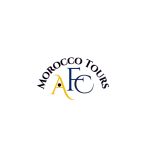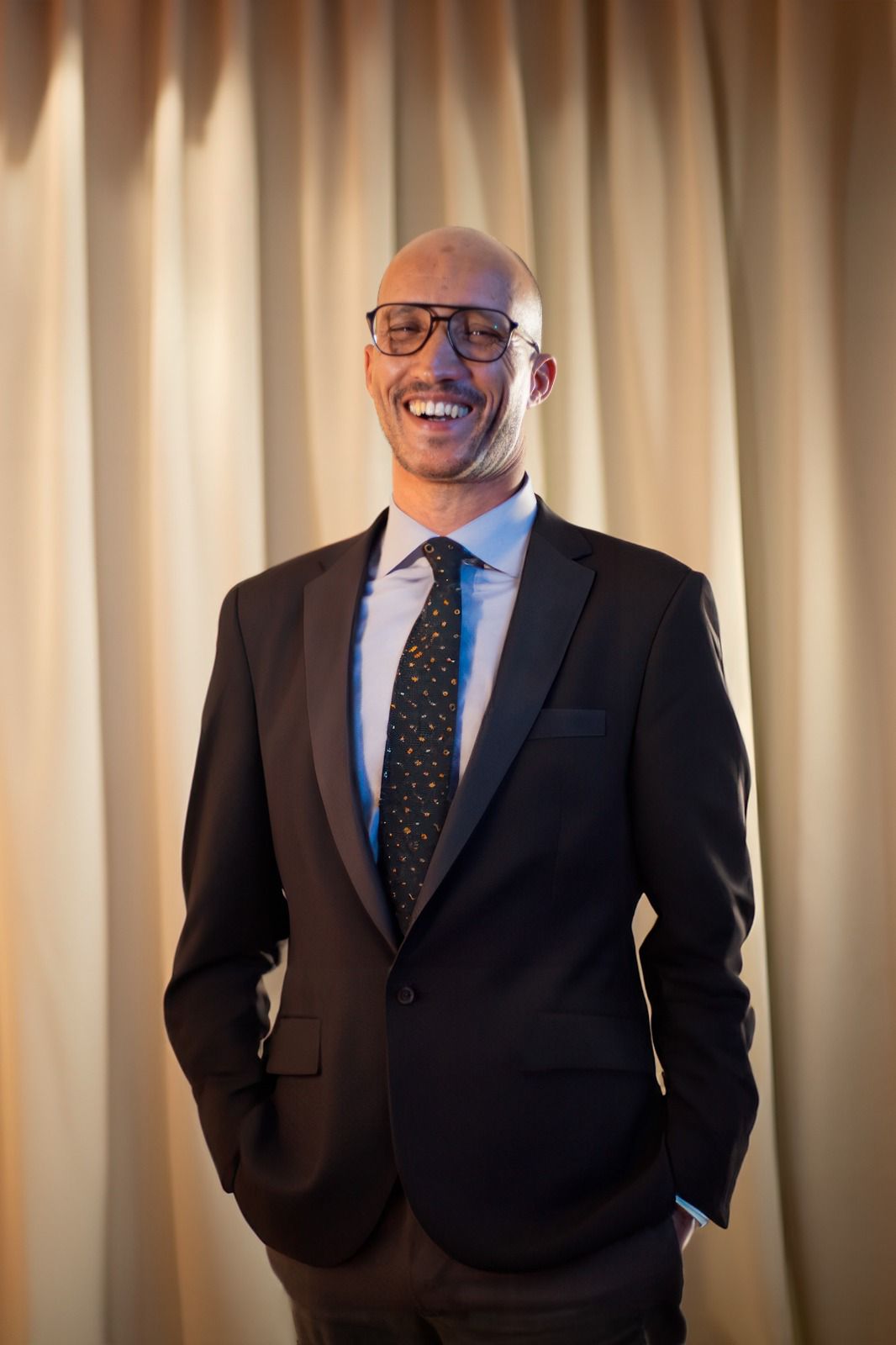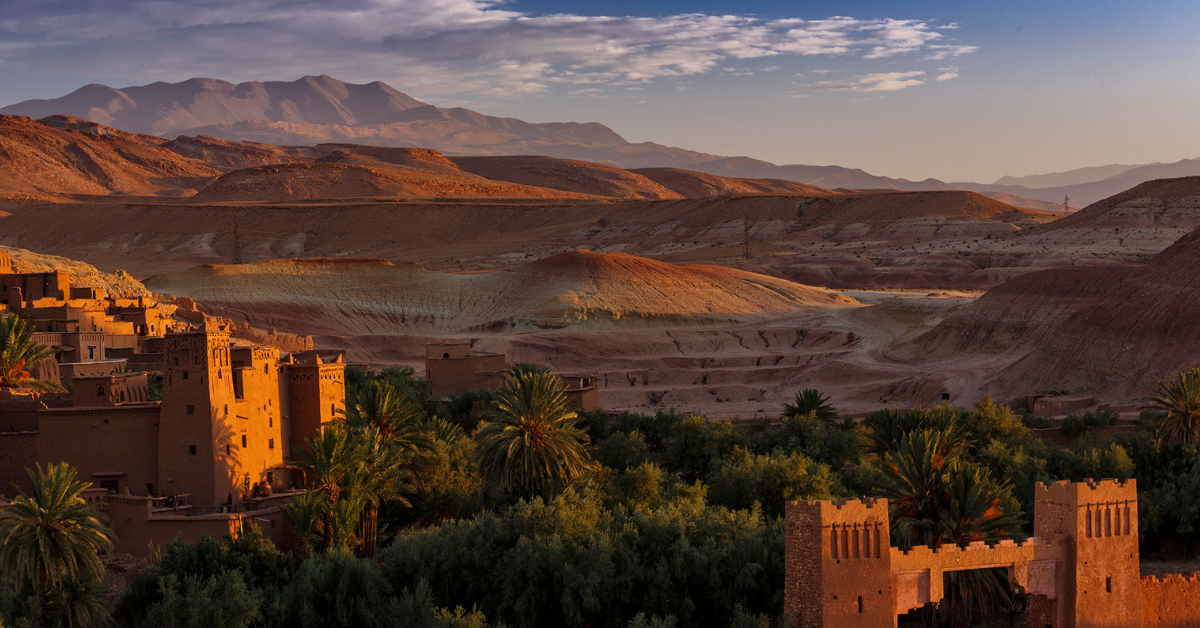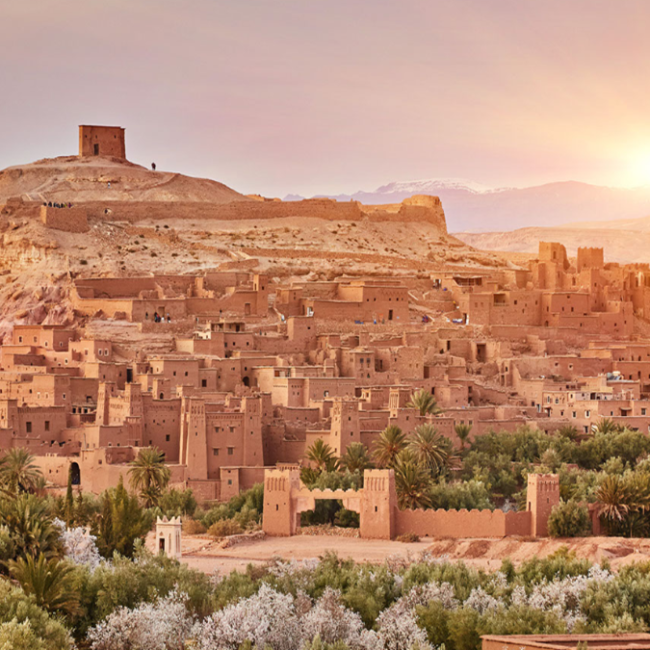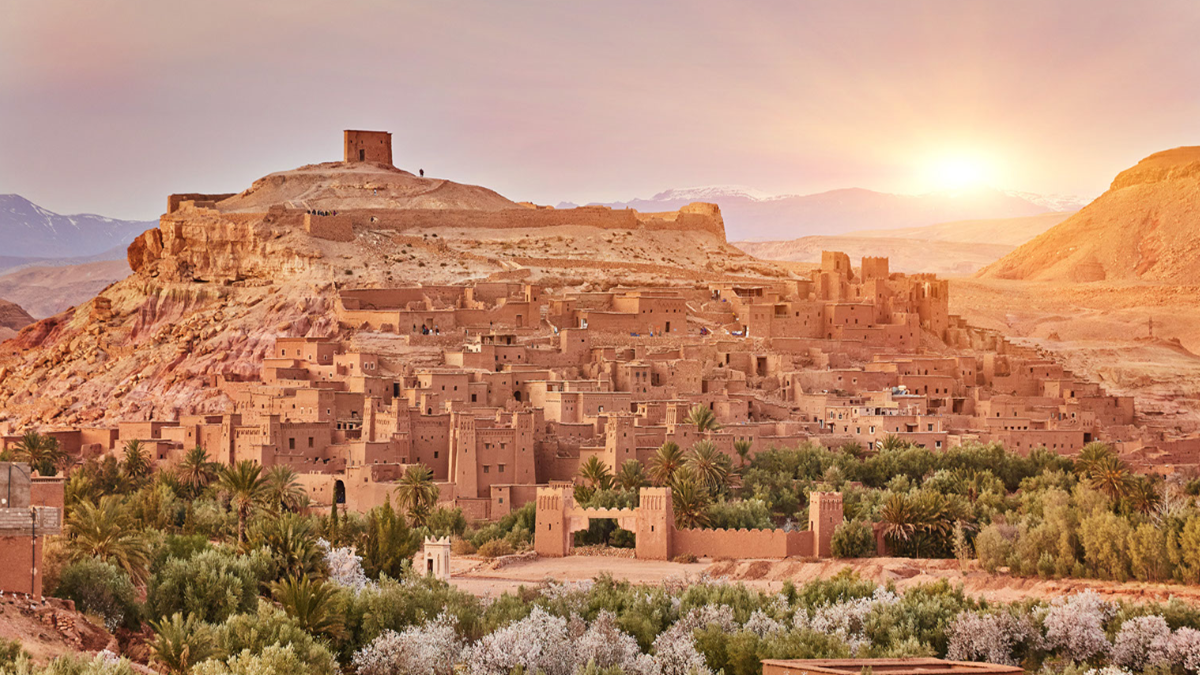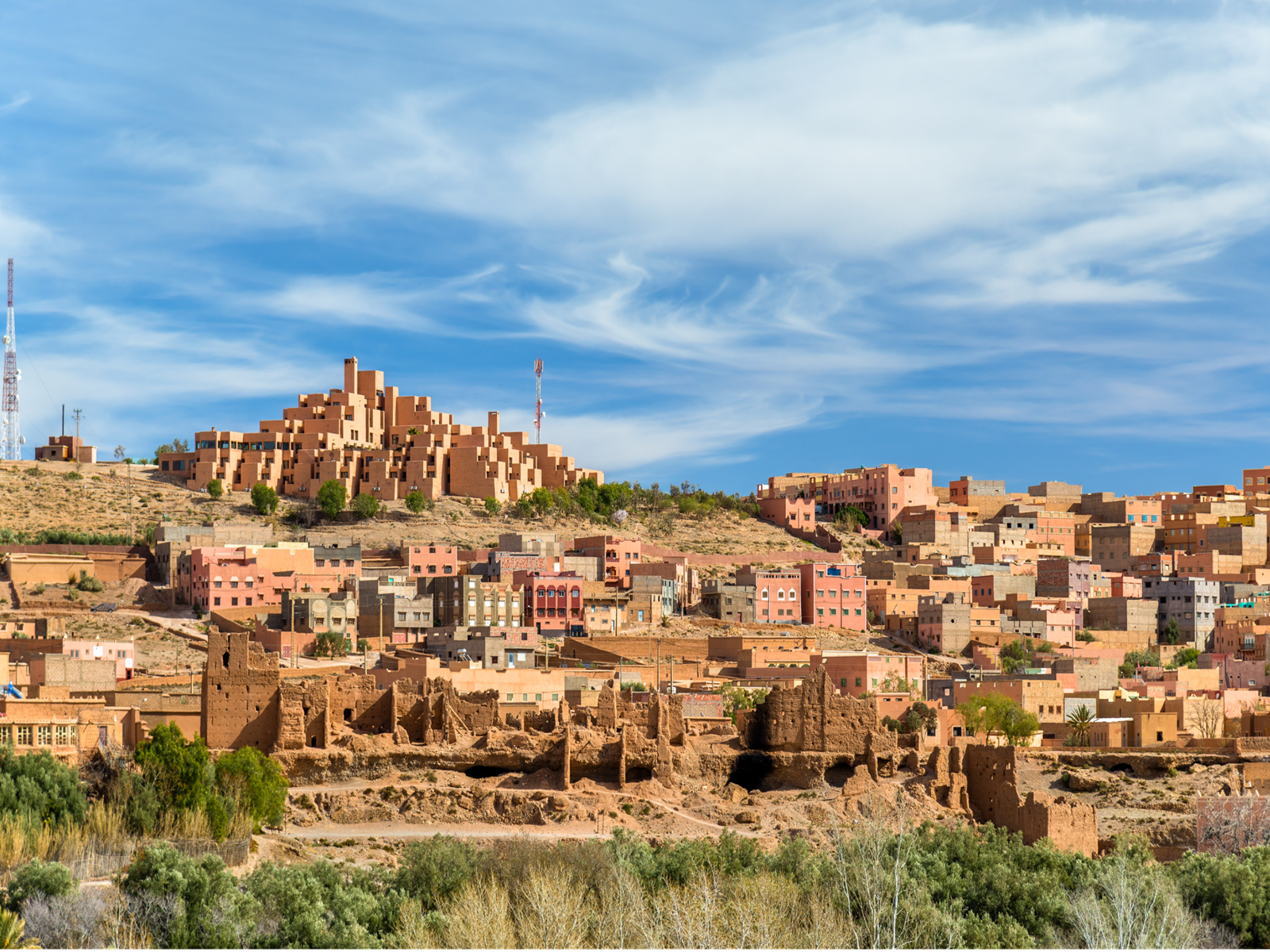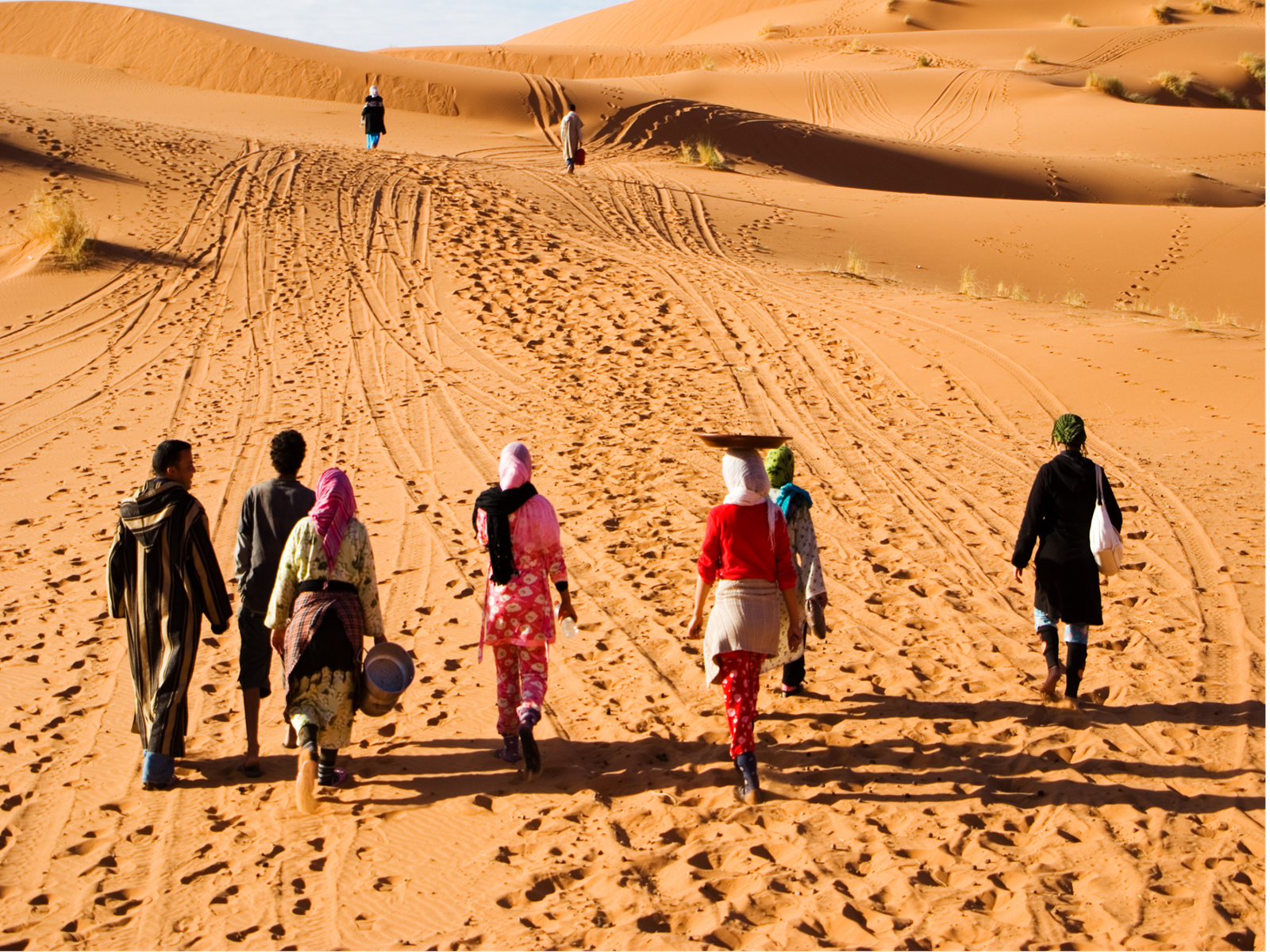4-Day Tour From Marrakesh To Erg Chegaga Desert
4-Day Tour From Marrakesh To Erg Chegaga Desert
Morocco is one of the well-known tourist destinations due to its rich cultural heritage. Morocco travel opportunities help you enjoy an exciting vacation in its major cities and the desert area. Bounded by a 3,500-meter coastline the country, whilst being an Islamic nation, is cosmopolitan and is made up of people from other communities too.
Morocco Tours covers a string of popular city destinations as well as Morocco desert tours in the sand dunes of the Sahara. Some of the best places to visit in Morocco are Marrakesh, Fez, Chefchaouen, Tangier, Essaouira, Rabat, Casablanca, Merzouga, Ziz Valley, Todra Gorge, Dades Valley, Erg Chigaga. morocco tour packages are very affordable when equated to the experience you will have.
Marrakesh tourism offers an amazing trip to the Erg Chigaga Desert in 4 days covering the breathtaking locations along the way returning to Marrakesh.
-
Departure
Marrakech -
Departure Time
8 AM -
Return Time
6 PM -
Dress Code
Casual -
Included
Camel trek (one camel per guest)Entrance FeesMeals as per itineraryNew air-conditioned vehicle 4WD or Minivan/Mini BusOvernight in Desert Luxury CampPick-up and Drop Off ServiceProfessional driver/Tour guide during the tour -
Not Included
FlightsLocal guides in major cities: Fes; Marrakech, Casablanca mosque, Volubilis; Essaouira, Atlas MountainsLunches and drinks unless specifiedPersonal expenses
Tour Plan
Day 1: Marrakesh – Ouarzazate – The Draa Valley
Day 2: Drive through the Draa Valley & Camel trek
Day 3: M’Hamid – The Dunes of Erg Chigaga
Day 4: The Sahara Desert – Foum Zguid – Marrakesh
Reviews Scores and Score Breakdown
Post a Comment
20 Things You Must Know Before Visiting Morocco Travel Tips
More and more people are visiting Morocco every year. It’s a beautiful country. If you plan on going, here are a few pointers to help you prepare for your trip.- Dress Appropriately
- Currency and Cost
- ATMs.
- Keep Correct Change with You
- Tipping
- Be Wary of Local Guides.
- Stay Away from Strangers Offering Free Tours or Directions.
- Fridays are Holy Days and Prepare for Holidays
- Careful What Water You Use
- Pack Some Immodium
- Watch Your Pockets
- What Language Do They Speak?
- Hello(Peace Be With You): Salam Alikome (salaam a eleikum)
- Thank You:Choukran (shokran)
- No Thank You: La Choukran (la shokran). This one is useful when you have a bunch of street vendors hassling you to buy something.
- Watch Out: Although you won’t use this yourself, you’ll most likely hear this in the medinas or souks (outdoor markets). It will be said by locals coming by with a mule, motorcycle, or cart and is a warning to move to the side.
- Visiting Mosques:
- Do I Need a Visa or Vaccines?
- Ask Before Taking Photos (And You May Have to Pay).
- Souvenirs to Bring Home:
****************************
Overall, Morocco is a beautiful country, and you will be happy to experience it. As long as you’re completely aware of your surroundings, and you go in with the right mindset and expectations, you can have a wonderful experience.